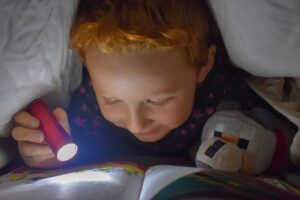Children’s books do more than help kids learn to read. They shape how children think, ask questions, and make sense of the world. These early reading experiences stick with us longer than we realize. In fact, they can even influence how future teachers are taught and tested at university. This article looks at how children’s books, with their simple stories and big ideas, shape university exams and assessments in education courses. It’s about connecting what we read as kids to how educators are trained today.
How Children’s Books Help Kids Learn to Think
From a young age, reading helps children pick up new words, understand how sentences work, and spot patterns in how we speak and write. Repetition, rhyme, and simple storylines make it easier for kids to follow along and remember what they’ve read. But these books also do something else—they teach kids how to think. Many children’s stories include problems that characters need to solve. Whether it’s finding a missing item, dealing with a tricky friend, or figuring out how to get home, these moments help kids start thinking in steps, seeing different options, and understanding outcomes.
Take a book like The Very Hungry Caterpillar. It’s not just about caterpillars eating food. It introduces counting, days of the week, cause and effect, and even life cycles—all in a way a child can grasp. That mix of language and thinking skills is powerful. These early lessons stick. They shape how kids reason and make decisions—skills that later become part of university-level learning, especially for students studying how to teach.
The Link Between Early Reading and University Learning
The skills we pick up from children’s books don’t disappear as we grow—they build the base for everything that follows in school and beyond. At university, especially in education courses, students still rely on those early lessons: understanding narratives, thinking critically, solving problems, and seeing things from different perspectives.
While the content becomes more complex, the core ideas stay the same. In primary school, a story teaches cause and effect. In university, that same thinking helps students analyze research or plan lessons. Early reading also builds habits—like asking questions, noticing structure, and thinking through outcomes—that stay useful later. In some cases, students in education fields also look at how writing reflects thinking. To manage this, some use a ghostwriting agentur to study how ideas can be put into words clearly, just like children’s books do with simple stories and direct messages. For those learning how to teach, seeing how early reading shapes thinking helps them design better ways to assess and support future learners.
Influence on University Curriculum Design
Children’s books aren’t just for the early years—they also show up in how universities design education degrees. These books help explain how young children learn language, follow structure, and develop basic thinking. That’s why many teaching courses include children’s literature as part of the training. Universities build this into their programs in different ways. Here are some examples:
- University of Cambridge includes sessions on how stories support early reading and language use.
- University of Glasgow uses picture books in workshops to teach how to plan lessons and support early literacy.
- University College London (UCL) offers reading lists focused on story structure, language development, and using books to meet learning goals.
These courses don’t just ask students to read books—they explore how stories are used in classrooms, how they help with reading and writing, and how they support wider learning goals. Future educators are also trained to select the right books for different learning needs and to use stories in ways that support national curriculum standards.
Impact on Exam Design and Assessments
The way children’s books teach through clear steps, simple problems, and direct outcomes shows how university assessments are built for education students. The focus is on how to take those early learning methods and apply them when planning lessons or checking progress in the classroom.
- University of Exeter: Students choose a children’s book and create a reading activity. They explain how it helps with reading skills and how they would use it in class.
- University of Reading: Students use a children’s book to build a short lesson plan. They add learning goals, questions, and ways to check what children understand.
These kinds of tasks reflect the books’ structure—beginning, middle, end; issue and solution; cause and effect. By using this approach, universities test how well students can take simple teaching tools and turn them into full lessons.
Future Trends and Implications
Children’s books will likely stay part of how future teachers learn. But their use may also grow in other areas like psychology, social work, or language studies. Stories can help explain how people think, learn, and solve problems—so they’re useful in more than just classrooms for kids. In the future, university tasks may include more story-based work. Students might be asked to build lessons, explain learning steps, or explore how a story supports emotional or social growth.
When writing these kinds of tasks, clear structure is important. Some use services like seminararbeit schreiben lassen to help organize their ideas and stay on track with academic rules. As more courses use stories to teach big ideas in simple ways, children’s books could become part of learning across many fields—not just education.
Conclusion
Early reading builds skills that stay with us—like thinking clearly, solving problems, and understanding how ideas connect. These skills are significant in both childhood and higher education, especially for students preparing to become teachers.
Universities now use children’s stories to teach lesson planning, assessment methods, and communication. These books help break down complex ideas into simple steps, making them useful in learning and teaching. As education methods continue to change, we may see more story-based approaches across different fields. What starts in a picture book can still shape how people learn and teach years later.



